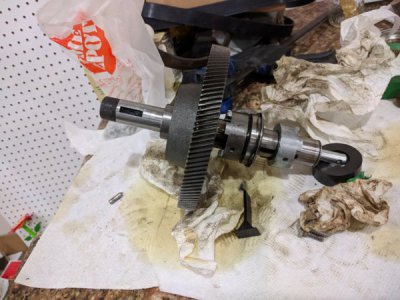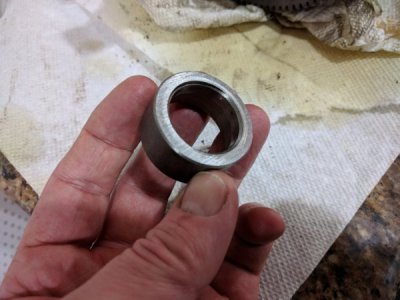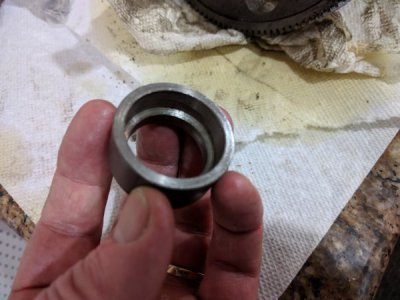Hey y'all,
I'm restoring an old 14" Rockwell/Delta metal/wood cutting bandsaw, which has a crack in the casting. After some consideration, I've figured that the safe thing to do is to machine a new spacer for the one I believe is short to protect the casting from getting crushed (again) when the wheel is tightened up.
I have a PM1236 lathe in my basement, but I'm a rank beginner, and so I'm pondering this very basic question of what sort of stock would be (most) appropriate for the application. This spacer rests against two inner bearing races and rolls with the shaft. The cavity in the casting has oil in it, that'll splash around when the big gear wheel spins.
So, can y'all elucidate me as to the whats and the whys?
Siggi
I'm restoring an old 14" Rockwell/Delta metal/wood cutting bandsaw, which has a crack in the casting. After some consideration, I've figured that the safe thing to do is to machine a new spacer for the one I believe is short to protect the casting from getting crushed (again) when the wheel is tightened up.
I have a PM1236 lathe in my basement, but I'm a rank beginner, and so I'm pondering this very basic question of what sort of stock would be (most) appropriate for the application. This spacer rests against two inner bearing races and rolls with the shaft. The cavity in the casting has oil in it, that'll splash around when the big gear wheel spins.
So, can y'all elucidate me as to the whats and the whys?
Siggi
Last edited:



